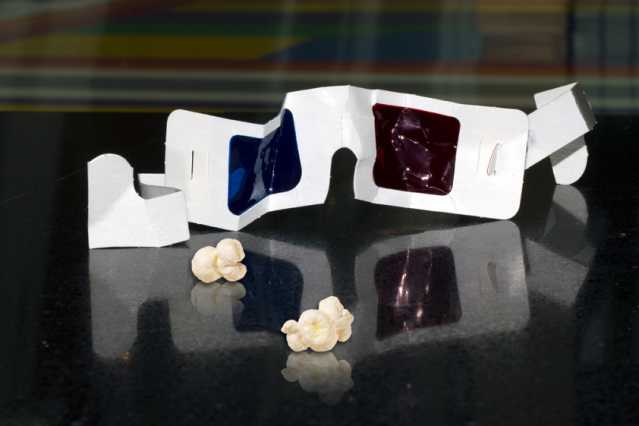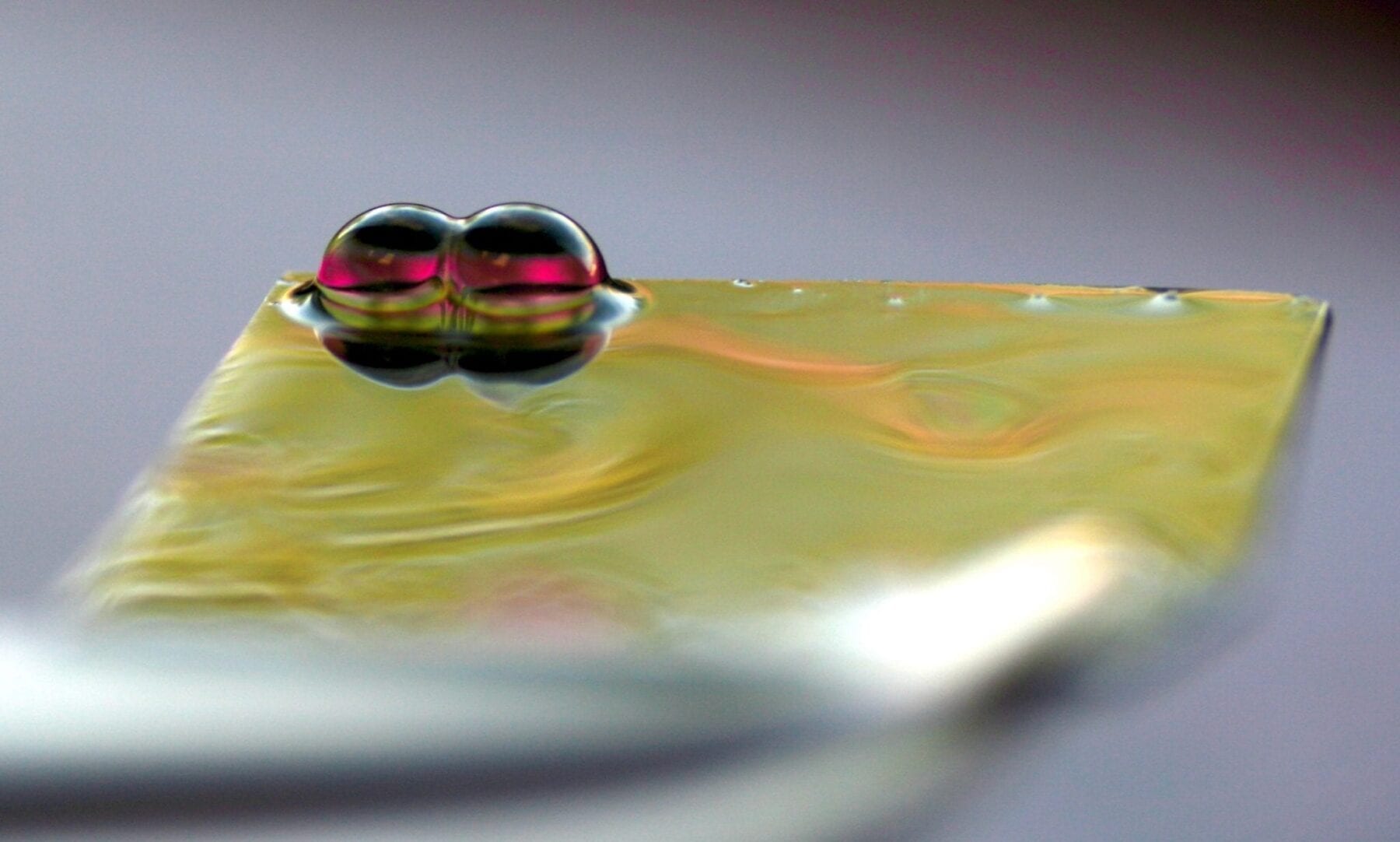
New design could also make conventional 2-D video higher in resolution and contrast.
Over the past three years, researchers in the Camera Culture group at the MIT Media Lab have steadily refined a design for a glasses-free, multiperspective, 3-D video screen, which they hope could provide a cheaper, more practical alternative to holographic video in the short term.
Now they’ve designed a projector that exploits the same technology, which they’ll unveil at this year’s Siggraph, the major conference in computer graphics. The projector can also improve the resolution and contrast of conventional video, which could make it an attractive transitional technology as content producers gradually learn to harness the potential of multiperspective 3-D.
Multiperspective 3-D differs from the stereoscopic 3-D now common in movie theaters in that the depicted objects disclose new perspectives as the viewer moves about them, just as real objects would. This means it might have applications in areas like collaborative design and medical imaging, as well as entertainment.
The MIT researchers — research scientist Gordon Wetzstein, graduate student Matthew Hirsch, and Ramesh Raskar, the NEC Career Development Associate Professor of Media Arts and Sciences and head of the Camera Culture group — built a prototype of their system using off-the-shelf components. The heart of the projector is a pair of liquid-crystal modulators — which are like tiny liquid-crystal displays (LCDs) — positioned between the light source and the lens. Patterns of light and dark on the first modulator effectively turn it into a bank of slightly angled light emitters — that is, light passing through it reaches the second modulator only at particular angles. The combinations of the patterns displayed by the two modulators thus ensure that the viewer will see slightly different images from different angles.
The researchers also built a prototype of a new type of screen that widens the angle from which their projector’s images can be viewed. The screen combines two lenticular lenses — the type of striated transparent sheets used to create crude 3-D effects in, say, old children’s books.
. . .
As content creators move to so-called “quad HD,” video with four times the resolution of today’s high-definition video, the combination of higher contrast and higher resolution could make a commercial version of the researchers’ technology appealing to theater owners, which in turn could smooth the way for the adoption of multiperspective 3-D. “One thing you could do — and this is what actual projector manufacturers have done in the recent past — is take four 1080p modulators and put them next to each other and build some very complicated optics to tile them all seamlessly and then get a much nicer lens because you have to project a much smaller spot and bundle that all up together,” Hirsch says. “We’re saying you could take two 1080p modulators, stick them in your projector one after the other, then take your same old 1080p lens and project through it and use this software algorithm, and you end up with a 4k image. But not only that, it’s got even higher contrast.”
The Latest on: Glasses-free 3-D projector
[google_news title=”” keyword=”Glasses-free 3-D projector” num_posts=”10″ blurb_length=”0″ show_thumb=”left”]
via Google News
The Latest on: Glasses-free 3-D projector
- Ray-Ban Meta smart glasses do the AI thing without a projector or subscriptionon April 23, 2024 at 10:54 am
The Ray-Ban Meta smart glasses have adopted multimodal AI features. This allows the glasses to describe the world around you and translate languages.
- Sony Electronics Enhances Glasses-Free 3D Spatial Reality Displayson April 10, 2024 at 5:00 pm
Sony Electronics’ ELF-SR2 and ELF-SR1 Spatial Reality Displays, which provide realistic, three-dimensional content without special glasses or VR headsets ... tools for showcasing 3D data on spatially ...
- Why can’t you look at the eclipse? Here’s how to DIY safe viewing glasseson April 8, 2024 at 7:28 am
On Monday 8 April, a total solar eclipse of the sun will take place across the United States, Mexico, and Canada. During this eclipse, the moon will pass directly between the sun and Earth, which ...
- Where to get free glasses for April's solar eclipse in San Diegoon April 8, 2024 at 3:38 am
You can purchase safe solar viewing glasses online but there are also ... of Balboa Park (near the fountain) and receive a free pair of NASA 3-D eclipse classes. The event is from 9 a.m. to ...
- The best smart glasses to buy in 2024on April 5, 2024 at 5:00 pm
The sound quality is nice, and the AirGo 3 have stronger speakers than Meta’s smart glasses, making it easier to hear in noisy environments. Solos includes ChatGPT for free, but a premium ...
- Can you use 3D glasses to watch the solar eclipse?on April 5, 2024 at 11:40 am
Although they look similar, you can not use 3D ... glasses. If you don’t have eclipse glasses, you can still enjoy the spectacle through indirect ways such as making a pinhole projector using ...
- Where to find eclipse glasses and watch parties around the DC areaon April 5, 2024 at 12:47 am
If you’re still looking to get glasses ... in D.C., you can get free eclipse glasses while supplies last from 12 to 4 p.m. The Smithsonian store also has the glasses on sale going for 3 for ...
- Free Solar Eclipse Glasses: How to Score a Pair This Weekendon April 4, 2024 at 11:59 am
(You can also make your own pinhole projector.) Another good option for finding free solar eclipse glasses is to visit your local library to see if it's offering any. The AAS has a map of ...
- Got a colander or cheese grater? You can use them to indirectly view the solar eclipseon April 3, 2024 at 1:21 am
NASA states that regular sunglasses are not safe for direct solar viewing. The special solar eclipse glasses block out 98% of the sun’s light. These glasses can be ordered online at Amazon or can be ...
- Where to get free solar eclipse glasses in the Chicago areaon April 1, 2024 at 8:06 am
With this projector ... away free glasses. The Legler Regional branch in Budlong Woods at 115 S. Pulaski Rd. will be holding a Solar Eclipse Viewing event from 12:30 p.m. to 3 p.m. The event ...
via Bing News









